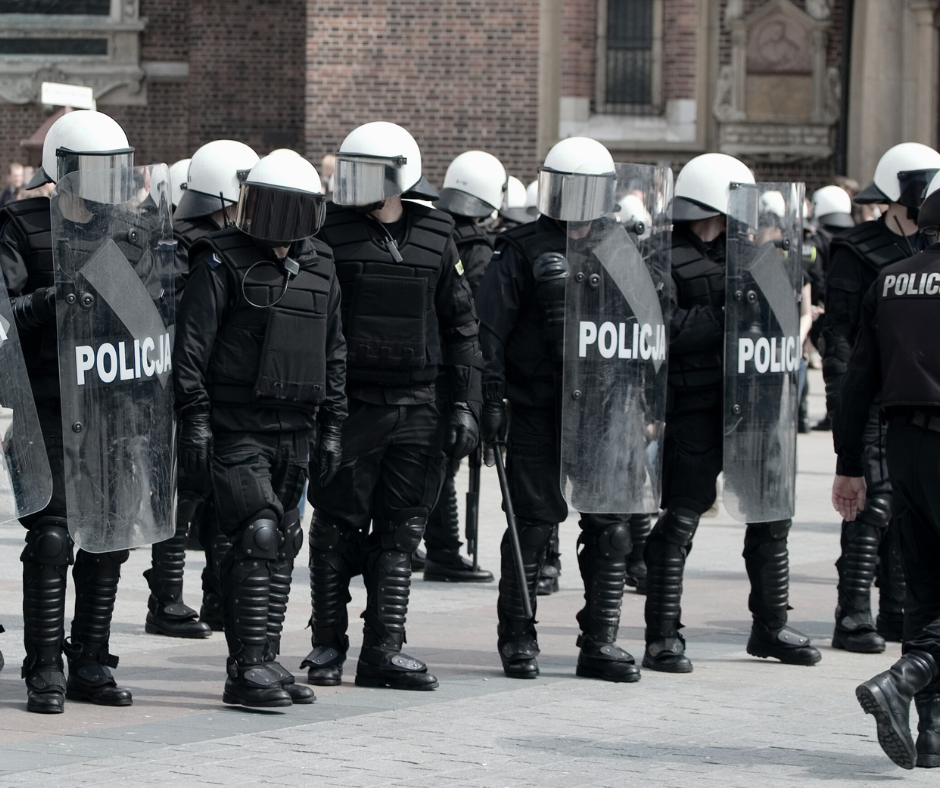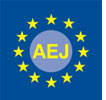
Journalistic and media organizations from Serbia and the region strongly condemn the continuous attacks on journalists and media workers during coverage of events of public importance, as well as the brutal assaults by police officers. These organizations demand that the police and all citizens stop attacking, threatening, and intimidating journalists and media workers, and ensure they can work under normal and safe conditions.
During last night’s protests, ten serious incidents were recorded — ranging from physical assaults and verbal abuse to damage and destruction of equipment. The attacks came from both citizens and police officers, who not only failed to prevent the violence but, in many cases, were the perpetrators themselves.
The red line has long been crossed. What’s next?
Compass journalist Danica Ilić was filming President Vučić as he addressed his supporters in front of the party offices in the Savski Venac municipality in Belgrade when SNS supporters began insulting and humiliating her, despite the fact that she was clearly marked as PRESS. This happened just five meters from the president. When the journalist attempted to ask him a question, the men surrounding him forcibly took her phone. What is particularly concerning is the reaction of the police — instead of offering assistance, they advised her to “get used to the situation.” The journalist has reported the incident to the relevant authorities.
Foreporter journalist Gavrilo Andrić was attacked again last night, despite standing off to the side, wearing a press vest, about 100 meters away from the crowd, in a group with other journalists, and with a clearly visible press ID. A police officer passing by struck him with a baton on the helmet and knocked him to the ground.
Nikola Bilić, a journalist from the 192 portal, was beaten in Novi Sad, while Žarko Bogosavljević from the Razglas portal was hit on the head with a baton. He was saved by the helmet he was wearing.
Female journalists from Zoomer and Mašina were also targets of violence last night. Teodora Šulj and Ana Milosavljević were pushed by police officers in downtown Belgrade, who prevented them from filming an intervention involving a citizen lying on the ground. One officer even grabbed Teodora’s phone and pushed it away. Marina Nenadović was hit in the leg by a stone and pieces of pyrotechnics while reporting from the protests in Novi Sad. During a police intervention, an officer grabbed her by the arm and pushed her away, despite her wearing a press vest and having visible credentials.
A photojournalist and student from the Faculty of Natural Sciences and Mathematics in Belgrade who reports for several student media outlets was assaulted by police officers after recording an inspector exceeding his authority — harassing and pulling a young woman by the hair. When the officers noticed he was filming, they grabbed him, beat him, confiscated the memory card from his camera, and broke it.
Another police attack was recorded against a student-reporter from Puls generacije. While filming police officers assaulting a protest participant, a gendarme first seriously damaged his filming equipment with a baton, then struck him on the back of the head. The reporter continued filming, after which another officer approached from behind and attempted to knock the phone out of his hand. On the second attempt, he succeeded — the phone fell to the ground and the officer then stomped on it.
While reporting from the protests in New Belgrade and Zemun, “Mašina” journalist Marko Miletić was repeatedly pushed with riot shields by members of the Gendarmerie, despite being clearly identified as a journalist.
Last night’s events represent the culmination of violence against journalists — a trend that media associations have been warning about for months, almost on a daily basis. In recent months, there has been a growing number of attacks on journalists by police officers, along with a persistent lack of response to assaults happening in the presence of law enforcement. Just last night, six out of ten reported attacks were committed by police officers themselves. Instead of protecting journalists and enabling them to do their work, the institutions responsible for public safety are becoming direct perpetrators of violence, disregarding their legal obligations. Despite this, we demand that the police and the public prosecutor urgently investigate and resolve all attacks and threats against journalists, regardless of who the perpetrators are. The Ministry of Internal Affairs must launch and complete proceedings in all cases of abuse of power and overstepping of authority by its officers.
Journalistic and media associations remind the public that back in 2016, a Cooperation Agreement was signed with the Republic Public Prosecutor’s Office and the Ministry of Internal Affairs, with the primary goal of ensuring a higher level of protection for journalists and media workers. This document, along with the work of the Permanent Working Group for the Safety of Journalists — established based on that agreement — was intended to guarantee that the state would respond promptly and decisively to any attack, threat, or pressure against journalists. However, in a situation where we are now witnessing brutal and unjustified actions by the police against journalists on a near-daily basis, it has become clear that the very institutions which committed themselves to protecting journalists are now openly ignoring their own promises and the laws of this country. In such circumstances, the very purpose of the continued existence of the Permanent Working Group comes into question, as even the minimal progress achieved over the past nine years is being undermined before the eyes of the public — and of journalists and media workers themselves.
The Ministry of Internal Affairs continued today with its deliberate exclusion of certain media outlets. Although Minister Ivica Dačić announced a press conference last night, not all media were allowed to attend today’s event at the Palace of Serbia, which was organized by the Ministry. Television station N1 was explicitly denied access. According to N1, the decision to exclude them came directly from the office of the Minister of the Interior. The N1 editorial team was informed that, instead of a press conference, a closed briefing would be held for a select group of media. This practice constitutes open media discrimination, which is clearly prohibited under the Law on Public Information and Media. All of this indicates that the police are not acting transparently and are deliberately preventing certain information from reaching the public.
State institutions — and the police in particular — must recognize journalists as an essential pillar of democracy and human rights, and ensure their proper protection in order to prevent further escalation of violence against the press.
Signatories:
The Coalition for Media Freedom: the Association of Media, the Association of Online Media (AOM), the Independent Association of Journalists of Vojvodina (NDNV), the Independent Journalists’ Association of Serbia (IJAS/NUNS), the Business Association of Local and Independent Media “Local Press”, the Slavko Curuvija Foundation and Branch Trade Union of Culture, Arts and Media ‘Nezavisnost’
Journalists’ Association of Serbia (JAS)
The Association of Independent Electronic Media (AIEM)
SafeJournalists Network: Association of Journalists of Kosovo, Association of Journalists of Macedonia, BH Journalists Association, Croatian Journalists’ Association, Independent Journalists Association of Serbia, Trade Union of Media of Montenegro
The source: IJAS
Photo by: Canva



